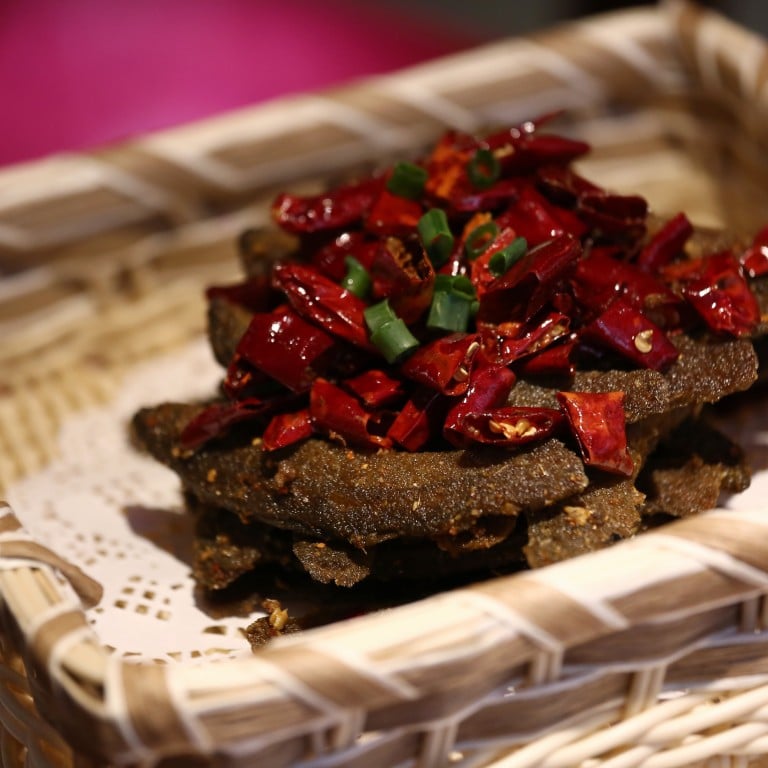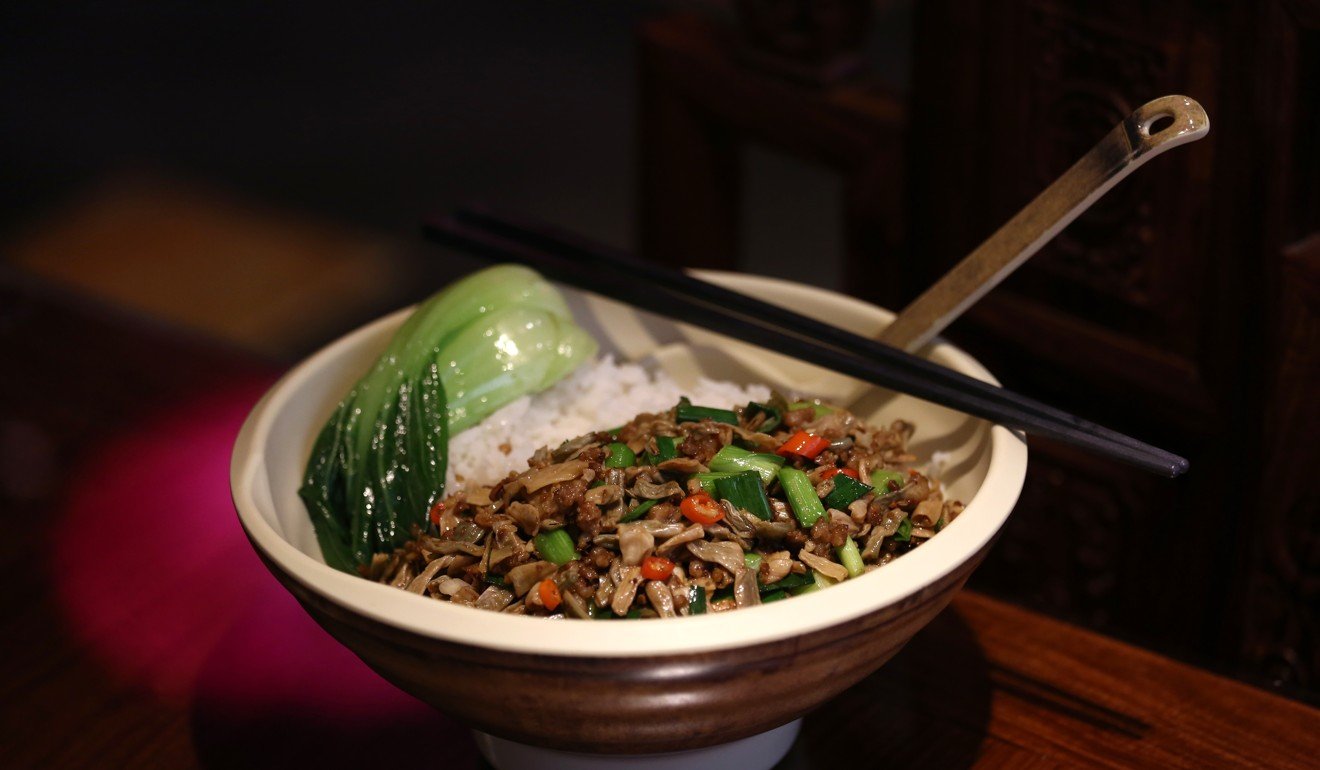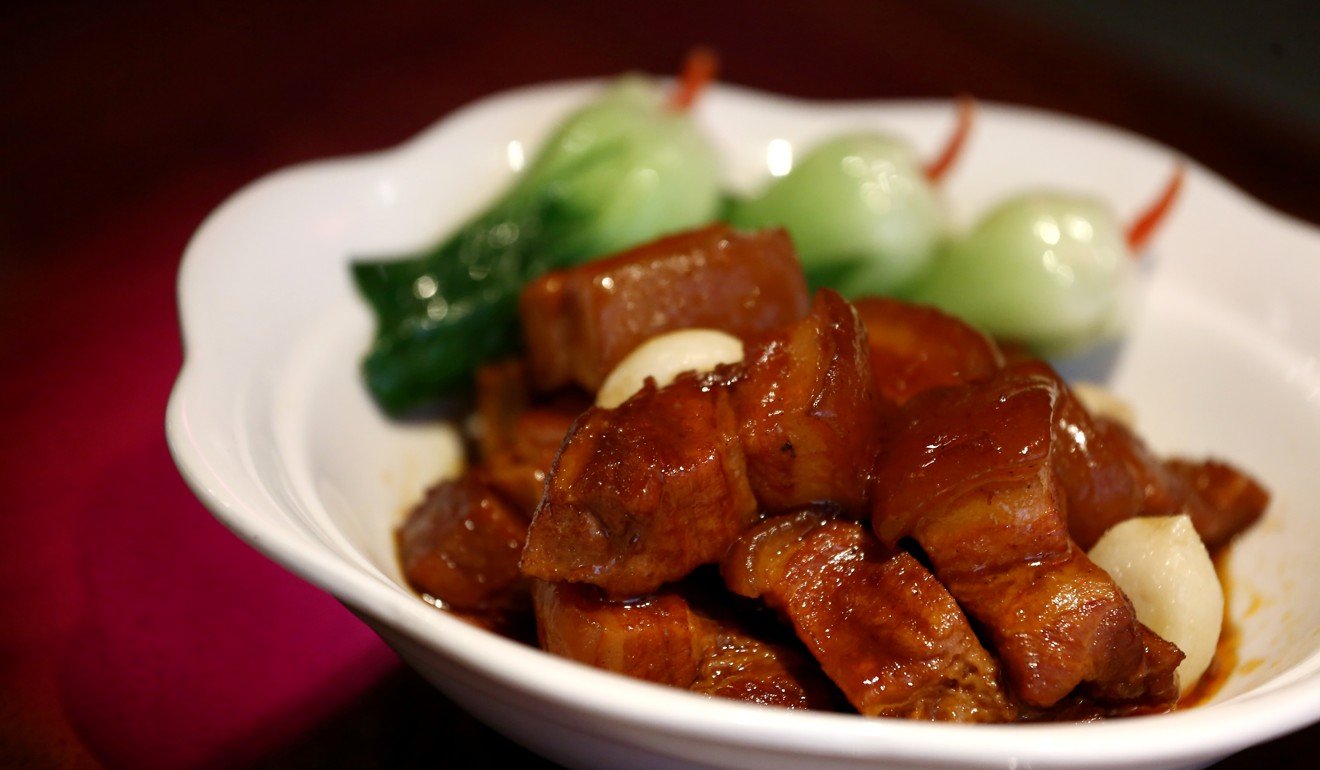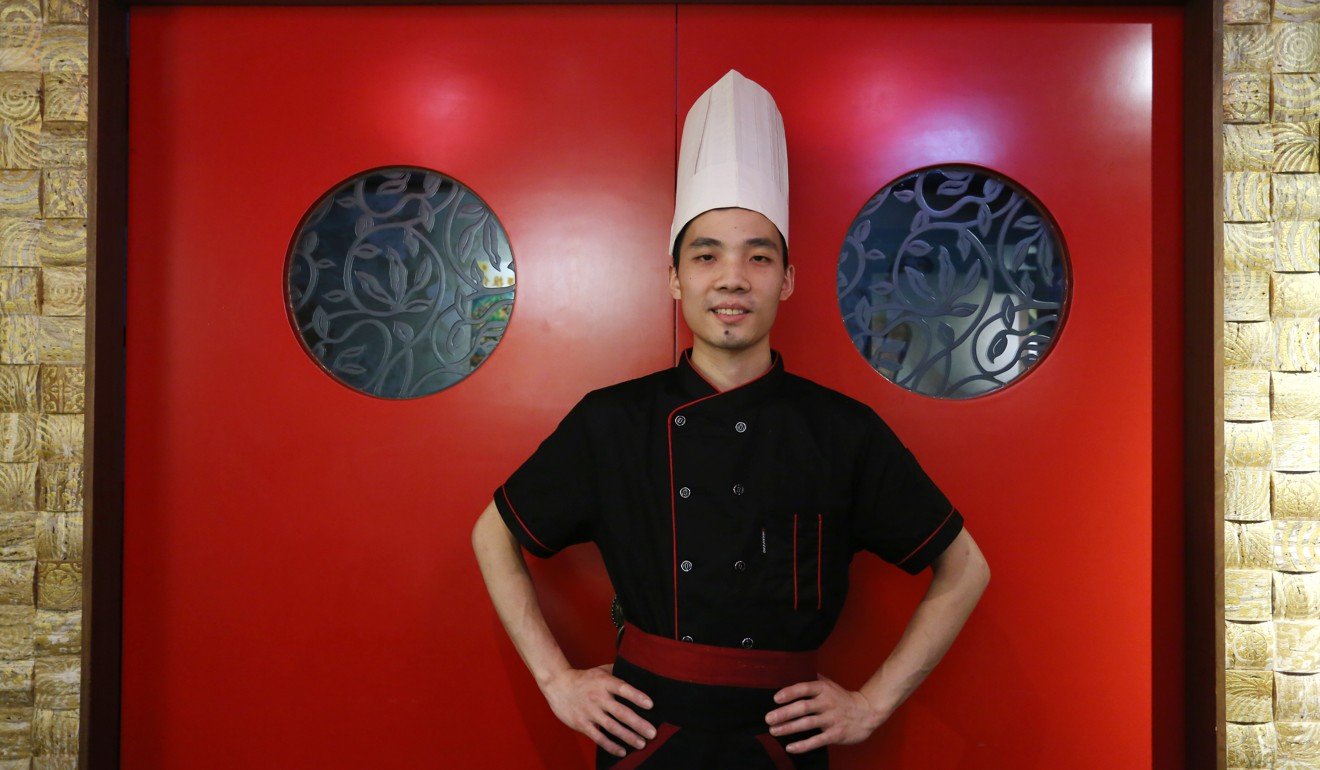
Chinese regional cuisine: Hunan food, and where to find the spicy and sour fare in Hong Kong
- From Mao Zedong’s favourite braised pork belly to stinky mandarin fish, here are three restaurants in Hong Kong that specialise in the spicy cuisine
- Hunan cuisine, from central China, is famed for using the heat from chillies mixed with sourness from pickles to create the ultimate spice combination
While the spicy food of China’s Sichuan province is well known for its burning numbness, chefs from Hunan province have their own take on using chillies.
“Hunan’s version stresses fragrance with a mild sourness,” says Xie Tianjiao, owner of a Hunan diner Shu Xiang Men Di (known in English as Cafe Hunan), in Hong Kong.
Xinjiang food and where in Hong Kong to eat it
Xie, who was born in Yongzhou, Hunan, is knowledgeable about the flavours of her home province in central China. “The tang of sourness stems from the fermentation process,” she explains.
Pickles are made from all types of vegetables and chillies, some of which are pickled just with salt. The ingredients are left in a sealed vat for one to two months, resulting in pickles that are wilted and salty with slightly sour notes.

Pickles have long played an important part in the diet of people from Hunan; they are added to meat dishes to balance the richness, served on their own as an appetiser, and are eaten with plain congee.
Eating sour spicy food in Hunan is believed to balance the humidity in body, or dispel “yin” in traditional Chinese medicine philosophy.
A classic Hunan dish that Xie serves in her restaurant – located in Hong Kong’s Wan Chai district – is braised mandarin fish with pickled cabbage and chilli.
Chinese regional cuisine: Yunnan – where to eat it in Hong Kong
The bones are separated from the flesh and flash fried, seasoned with broad bean paste and chilli sauce, then simmered with a broth made of chicken bones and pork knuckle. Sweet potato noodles, soybean sprouts and cone peppers are added before being briefly boiled. Finally, the chef drains off the broth and uses it to cook the fish.
“It takes only 15 seconds to cook the fish to retain its tenderness,” says Shu Xiang Men Di chef Fang Chao, who is from Changsha, Hunan. A drizzle of blistering hot oil seasoned with spring onions, dried chillies, peppercorns and pickles adds the final touch.
Both Hunan and Sichuan chefs favour using peppercorns. “Hunan chefs use it as a spice to intensify the flavour, while in Sichuan, peppercorn is a main character in many dishes,” Fang explains.
Chilli peppers are used in almost every dish in Hunan. “We use different types of peppers. There are fiery cone peppers, mildly hot Hunan peppers and slightly tart pickled peppers. Most households in Hunan cultivate peppers to sustain themselves all year round,” says Xie. Fang adds, “If the yield is so good that there’s a surplus [of chilli peppers], we sell it for profit.

Another classic dish that is popular all over China, is duo jiao yu tou, or fish head with chopped chilli peppers.
Xie’s son Huang Fei, 26, who heads Cuisine de Hunan, in Hong Kong’s Yau Ma Tei district, says, “Hunan people are addicted to spicy food. Without eating something hot for more than two days, we’d feel uncomfortable – [it’s] a protest from the stomach.”
Huang was born in Hunan and lived with his grandparents for 15 years, before coming to Hong Kong to study. In high school, he worked part time in restaurants that made spicy food, where he covertly learned from the experienced chefs. He would cook what he learned for his younger sisters and brother, and fine tuned his recipes based on their feedback.
Chinese regional cuisine: Shunde food, and where best to eat it in Hong Kong
Huang started his own business in March 2017, quickly gaining a local fan base comprised mainly of white collar workers and high school students who stream in at lunchtime for a spicy and filling meal.
Cuisine de Hunan’s lunch speciality is gai ma fan and includes various types of stir fries arranged on rice and served in a clay container to retain the heat. The choice of stir-fries is extensive, including sautéed pork slices with red and green peppers, minced pork with salted dried radish and turnip, and chicken offal with tart marinated pepper.

Another must-try at the restaurant is hong shao rou, or red braised pork belly. The dish was known to be the favourite of Mao Zedong, who was a Hunan native. It’s believed when Mao studied in Hunan First Normal University in 1914, the school canteen prepared this once a week. The dish is popular across China thanks to its association with Mao. Hunan cooks aim to make the dish “fatty but not greasy,” says Huang.
The secret is in the first step. Huang instructs, “deep-fry the half-fat, half-lean cuts over a high flame to force the fatty oil out of the pork”. The belly is braised in bean paste, beer and spices, then deep-fried garlic cloves are added. The ingredients are braised until the sauce is reduced to the consistency that can coat the meat and give it a brown glaze.
Chinese regional cuisine: Shunde food, and where best to eat it in Hong Kong
Flavours and cooking techniques vary greatly among the different areas of Hunan, which are loosely bound by the Xiang River, Dongting Lake and Xiangxi prefecture.
Dishes representing Xiang River are homespun stir-fries and pan-fries, says Ou Yang Hailin, who runs Hu Nan Heen in Hong Kong’s Causeway Bay district. “Most dishes are distinctly savoury and spicy. They are easily prepared and moderately seasoned, to maintain the original taste of the ingredients,” Ou Yang says.
“Our menu is predominately Xiang River dishes because they’re easily accepted by the average palate.” Highlights include sautéed beef tripe with hairlike seaweed, homestyle sautéed sea cucumber with green pepper, and stir-fried pork with peppers. There are also sophisticated stews featuring luxury ingredients that were exclusive to royal families in old times.

Dongting Lake dishes feature produce from the lake, says Ou Yang. With an abundant supply of freshwater fish and shellfish, people in the region came up with a unique way to maximise the ingredients’ freshness and umami.
Bo zi cai, or earthen pot dishes, are used in homestyle cooking, says Ou Yang. “Fresh lake ingredients are braised in the pot and served piping hot. The flame under the pot is kept on throughout the meal. The stock in the dish bubbles away and is reduced, and along the way, ingredients in the pot soak up the condensed flavour. Traditionally we use an alcohol burner,” says Ou Yang.
We use stinky tofu marinade to ferment the fish. The longer [it’s fermented], the more pungent, and the more umami [it is].
The bo zi dishes are enjoyed for their salty spiciness. “We don’t overdo the spice, letting the lake fish speak for itself,” says Ou Yang.
Another classic Hunan dish is stinky mandarin fish, which is also a timeless signature in China’s southeast Anhui province. The origin of the dish – Hunan or Anhui – is unknown. But one thing is for sure – the stink is easily delectable.
It’s time-consuming to prepare the dish, notes Ou Yang. “We use stinky tofu marinade to ferment the fish. The longer [it’s fermented], the more pungent, and the more umami [it is].” He adds, “You may wrinkle your nose when smelling it, but will fall in love with it after taking a bite.”
In Xiangxi – northwest Hunan – people have a fondness for ye wei, or gamy flavours. Any wild animals on the mountain are potential candidates for a wok sauté, including hares, boars, ducks, chickens, snakes and even some forbidden species.

Among the most beloved classics is xie jiang ya, or duck braised in duck blood sauce. For this dish, the chef collects the duck’s blood, stirring it and adding white vinegar to prevent the blood from clotting. The chopped duck is flash-fried in the wok until all the liquid comes out of the meat. The blood is then added, and after a gentle stir, it’s quickly dished up.
“The blood has no unpleasant smell. It only enhances the meaty taste. The haemoglobin in blood releases a large amount of amino acid in the presence of heat. It is the amino acid that creates the umami,” says Ou Yang.
People in Xiangxi are experts at preserving meat. Xiangxi la rou, or smoked sausage, together with Jinhua ham from Zhejiang province is popular throughout China. “We have la chicken, la pork, la fish, and la bean curd,” says Ou Yang. “Actually, ‘la’ in Hunan is a technique for food preservation involving the whole process of curing, air drying and smoking.” Smoking is a key step, lending the right amount of colour and flavour to the ingredients.
What Chinese cuisine was like in 1970
“We use cold smoke – the steaming smoke from cooking. In my home, we hang the cured food above the stove,” says Fang from Shu Xiang Men Di (Cafe Hunan). “But sadly,” he adds, “most stalls selling la products take a short cut today, using an open flame directly to smoke [the meat]. The result is unsavoury and rubbery because the meat loses too much fat during the smoking process.”
A number of restaurants specialising in Xiang cuisine have opened in Hong Kong in recent years, appealing to locals and Chinese visitors.
It’s no coincidence that the three restaurateurs started their businesses in Hong Kong because they were hungry for the taste of home. The restaurateurs are eager to share their hometown flavours with people in Hong Kong and are proud that they are contributing to the diversify of the city’s food scene.
Cuisine de Hunan/ Xiang Yao Shi Jia
M/F, Nathan Tower, 518-520 Nathan Road, Yau Ma Tei, tel: 2986 9932
Cafe Hunan/ Shu Xiang Men Di
1/F, Wayson Commercial House, 68-70 Lockhart Road, Wan Chai, tel: 2528 3699
Hu Nan Heen
4/F, Circle Plaza, 499 Hennessy Road, Causeway Bay, tel: 2602 6808
